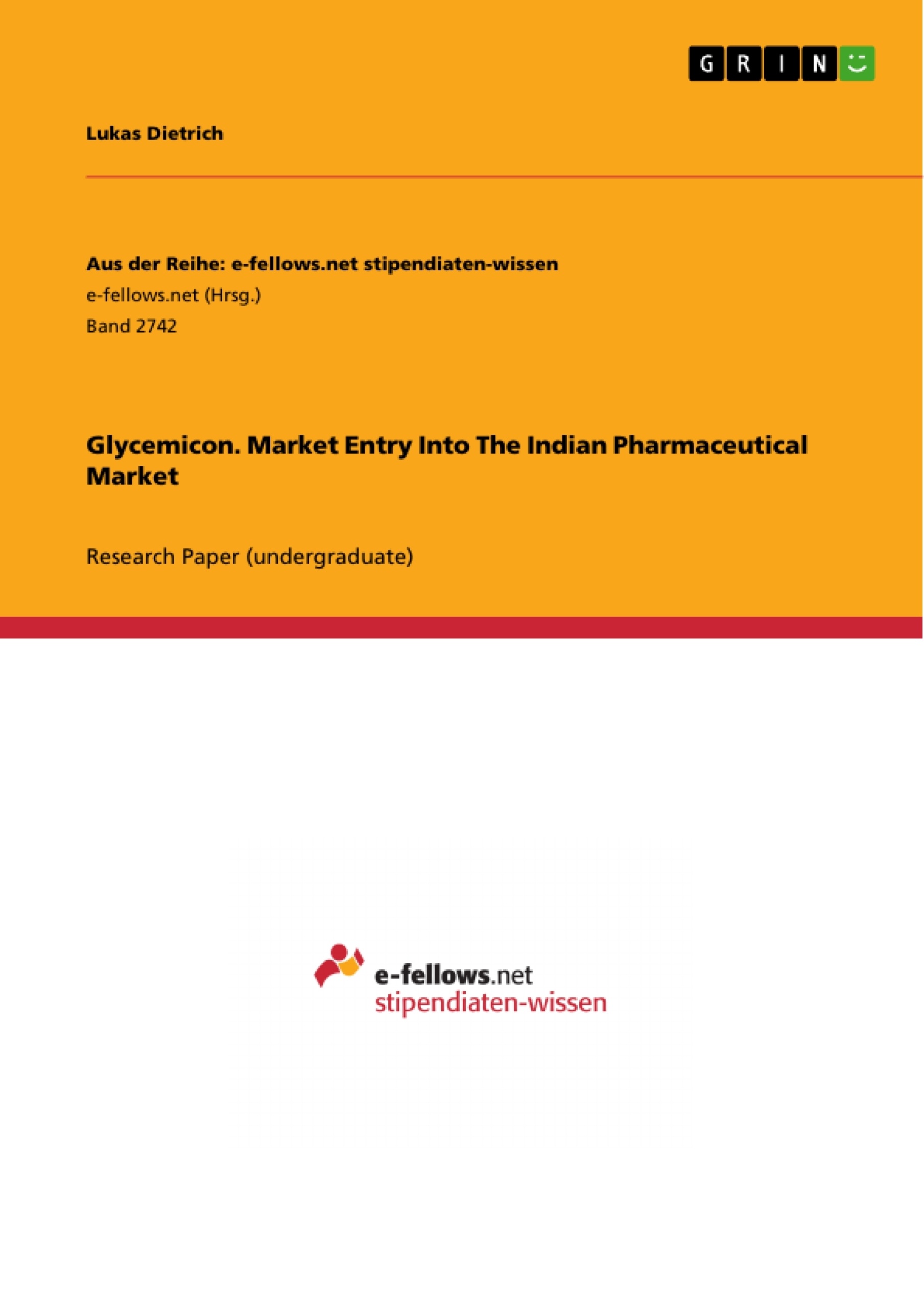The following paper analyzes the Indian pharmaceutical market in terms of drugs against diabetes in India and the market entry of the Swiss Start-up Glycemicon. In order to fulfill the given tasks, the target market will be analyzed and a brief recommendation for a possible market entry of Glycemicon will be given. The results of the paper are that the combination of the innovative product of the Swiss Start-up and the opportunities the Indian market offers, make a market entry through the form of an Alliance or a Joint Venture very promising.
Inhaltsverzeichnis (Table of Contents)
- ABSTRACT
- 1. INTRODUCTION
- 2. GLYCEMICON
- 3. MARKET ANALYSIS
- 3.1 BACKGROUND
- 3.2 DIABETES PHARMACEUTICALS IN THE INDIAN MARKET
- 4. COMPETITION ANALYSIS
- 4.1 POWER OF SUPPLIERS
- 4.2 ENTRY BARRIERS
- 4.3 THREAT OF SUBSTITUTES
- 4.4 POWER OF BUYERS
- 4.5 INDUSTRY COMPETITION
- 5. RECOMMENDATIONS FOR THE MARKET ENTRY PLANNING
- 6. CONCLUSION
Zielsetzung und Themenschwerpunkte (Objectives and Key Themes)
This paper explores the potential of the Indian pharmaceutical market for drugs against diabetes, focusing on the market entry strategy of the Swiss startup Glycemicon. It analyzes the target market, evaluates potential entry modes, and provides a recommendation for Glycemicon's market entry.
- Analysis of the Indian pharmaceutical market for diabetes drugs
- Assessment of the competitive landscape
- Evaluation of potential market entry strategies for Glycemicon
- Recommendation for an optimal market entry strategy
- Importance of building trust and a network in the Indian market
Zusammenfassung der Kapitel (Chapter Summaries)
The paper begins with an introduction outlining the growth of the Indian economy and the increasing demand for Western medicine, particularly for chronic diseases like diabetes. Chapter 2 provides a profile of Glycemicon, highlighting its innovative approach to treating diabetes through a medical food product. Chapter 3 examines the Indian pharmaceutical market for diabetes drugs, analyzing the market background and the growth potential. Chapter 4 delves into a competitive analysis, exploring the power of suppliers, entry barriers, threat of substitutes, power of buyers, and industry competition. While the paper does not include a conclusion or a summary of recommendations, it concludes with a statement about the importance of building trust and a network in the Indian market for success.
Schlüsselwörter (Keywords)
The main keywords and focus topics of the paper are the Indian pharmaceutical market, diabetes drugs, market entry strategies, Glycemicon, competition analysis, entry barriers, power of suppliers, power of buyers, and the importance of building trust in the Indian market.
- Quote paper
- Lukas Dietrich (Author), 2016, Glycemicon. Market Entry Into The Indian Pharmaceutical Market, Munich, GRIN Verlag, https://www.grin.com/document/420554



